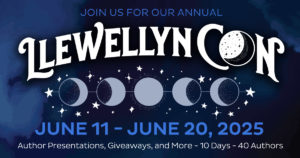Hone Your Psychic Skills in Tarot

Learn more HERE.
Nancy’s book is fast becoming a classic amongst those who want to bring something more to their readings, something other than knowledge of the cards. If you want to include your psychic skills to the table and to improve them, this book can really help. One of my favorite techniques of Nancy’s is the Initial Image.
A good way to get your intuitive compass pointing north during a reading is to seek out an initial image. The initial image is like no other technique proposed by other tarot readers. It is ideally suited for reading using psychic tarot in that one receives a psychic message or image before reading any cards. It is a quickly flashed image of the seeker at the moment of the reading. This could be received as a short movie, a picture, or simply a knowing of the seeker as their souls would have us know. The image or story clarifies the seeker’s current relationships with their own lives and goes beyond any symptoms they might initially present. Capturing the state of the seeker’s mind or spirit is profoundly useful when seeking the right tone or direction for the reading.
Finding the initial image isn’t very complicated: simply close your eyes, open your intuitive channels, and quietly ask the Creative Unknown for a story relating to the seeker’s soul. The process may feel a bit like hide-and-seek: you ask to see the soul’s story and then attempt to locate the seeker.
Note that you won’t always receive an initial image. The request for one is only granted when necessary to in- form the reading.
When given, initial images often appear as short films. For instance, the seeker is on a roller coaster or running down a country road with others. Other times it may be just a snapshot, such as a worried king on his throne or a young child looking at frog eggs. Most of the time, this is a “knowing,” meaning that you don’t really see anything as much as sense a story that proceeds in your imagination as if you were creating it. But you are notcreating it, you are receiving it. The difference is the sacred intent, which will be explained more fully within the Six Principles system.
Explore the initial image method for yourself. Find a willing partner for this exercise.
The Initial Image Evocation
Before much dialogue with your partner, close your eyes and internally ask for a story or a small movie that illustrates this person’s current state of being. Questions that might trigger this image are: What is most influencing the person right now? What past-life issue, if any, is being worked out? Do you detect any healing? How does your
partner like being on this planet? Who is he or she right now? What do I need to know right now to give as good a reading as possible? What does this person need to understand at this time?
You may receive a scene as brief and seemingly un- related as the person picking berries on a mountain or walking a tightrope while blindfolded. The image can be very fairy tale–like or starkly real. Breathe and be receptive to an image or story that vividly describes the seeker’s current reality. Describe this vision to your partner. Dis- cuss any trigger this may have, if any.
Ask which area or issue of your partner’s life could use different insight. As you listen to the response, keep in mind the initial image’s energy. Look behind words where bigger questions often hide. Ask more questions about the person’s question. “Is this what you really want to know?” or “I’m sensing something behind it, could that be the true matter?” Track and trust any variety of intuitive hit you get.
Once you both agree on the core question, close your eyes. Think of that initial soul story. Did the story shed light on the questions? Did the questions shed light on the story? For the next ten minutes or so, tell your partner your new sense of the story. If you received any kind of knowledge, pass it along, even if you don’t understand it. Speak of the messages without apology, censorship, or immediate validation. It’s important to let information ow unfettered. Afterwards, ask if this made sense or possibly triggered something deeper.
The initial image is a powerful first nod from the source. Even if the information received from this spiritual snapshot detours from the seeker’s main focus, its direction is the one to follow.
For instance, let’s say the initial image of a particular seeker portrays her joyfully singing onstage. When asked what brings her to the reading, however, she is intently focused on solutions for her unhappy marriage! As a reader, you would certainly explore the different dimensions of the marriage. But the Creative Unknown has given a significant clue for the focus of the reading, something about her creativity, her voice, or acknowledgment. Would a focus on her creativity serve both her and the marriage? What does she want to sing about? Could she be distracting herself with the relationship rather than stepping up to the plate with her own life risks? The reason for the image may not be clear in the beginning, but it remains a relevant clue—it’s spiritual information calling for recognition.
You may or may not disclose the image you receive to the seeker, but certainly relate it when deemed important. For example, consider an initial image of a seeker flying in a hot air balloon, enjoying the scenery below. This doesn’t give you much to go on, so you progress with the reading, keeping the image in the back of your mind. You become acutely aware of a pattern of noncommitment as the reading progresses. The seeker’s choices seem to show a tendency to stay aloof, to not handle things well on the ground. The initial image illustrates a need to be far above the ground. You suggest exploring the person’s views of
commitment by asking, “What would be the worst-case scenario of staying in one place or one relationship for many years?” or “Do you enjoy watching life from afar?” “When was the last time you really felt grounded?”
Finding the true challenge or question reaps great in- sights. The initial image may have invaluable information to get to the heart of the matter. Deeper values surface, are examined, and are possibly shifted. To paraphrase Anton Chekhov when he spoke of storytellers, it’s not your job to solve the problem—it is to state it clearly.







